Routine hoof care is very important, it can prevent suffering and pain. An uncared-for hoof could lead to infections and diseases and cause strain on joints, tendons and ligaments. Understanding the structure of the hoof and how to care for them will have a huge impact on the horse’s health and mobility.
- Home
- What We Do
- Equine Advice
- The Importance of Hoof Care
The Importance of Hoof Care
Understanding the parts of the hoof
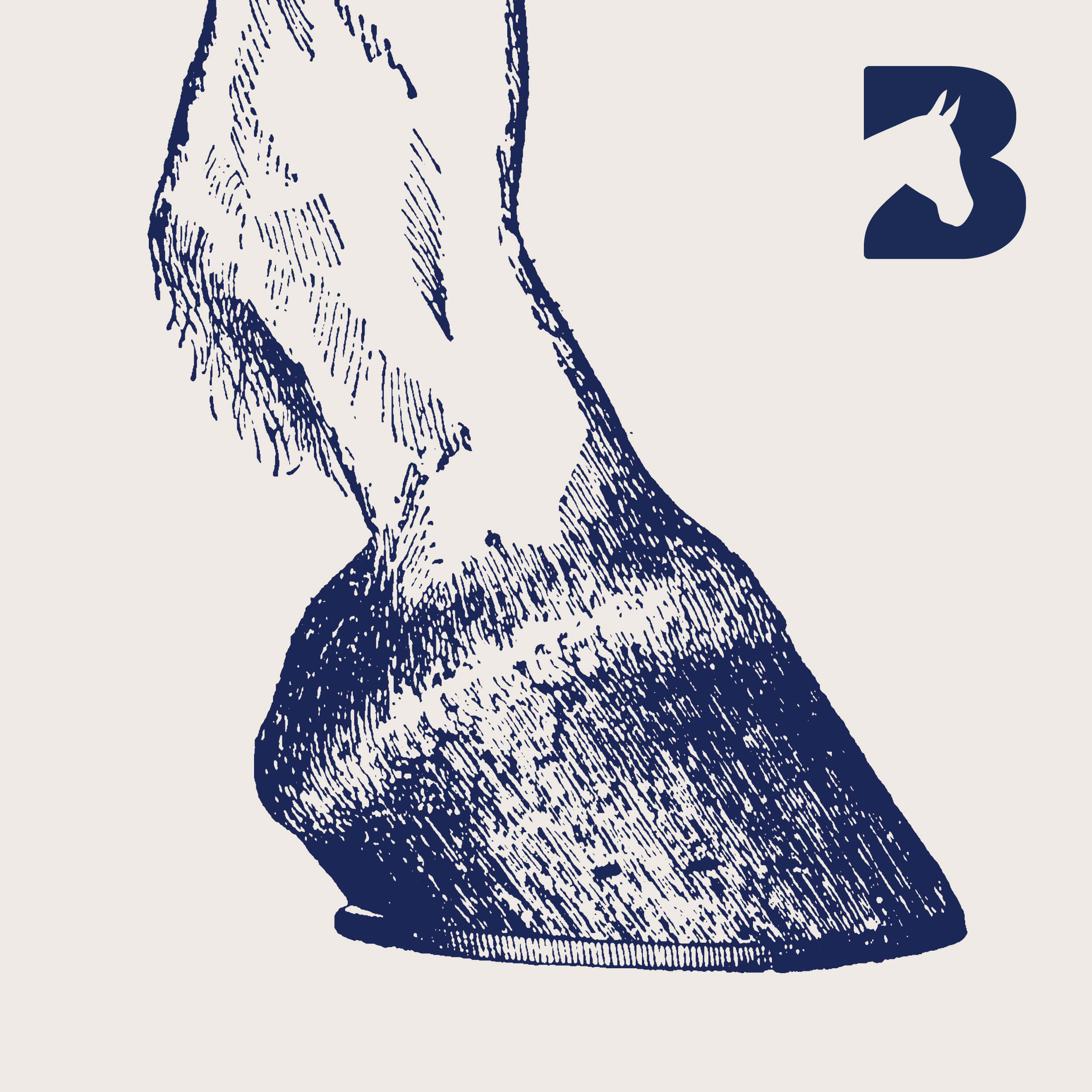
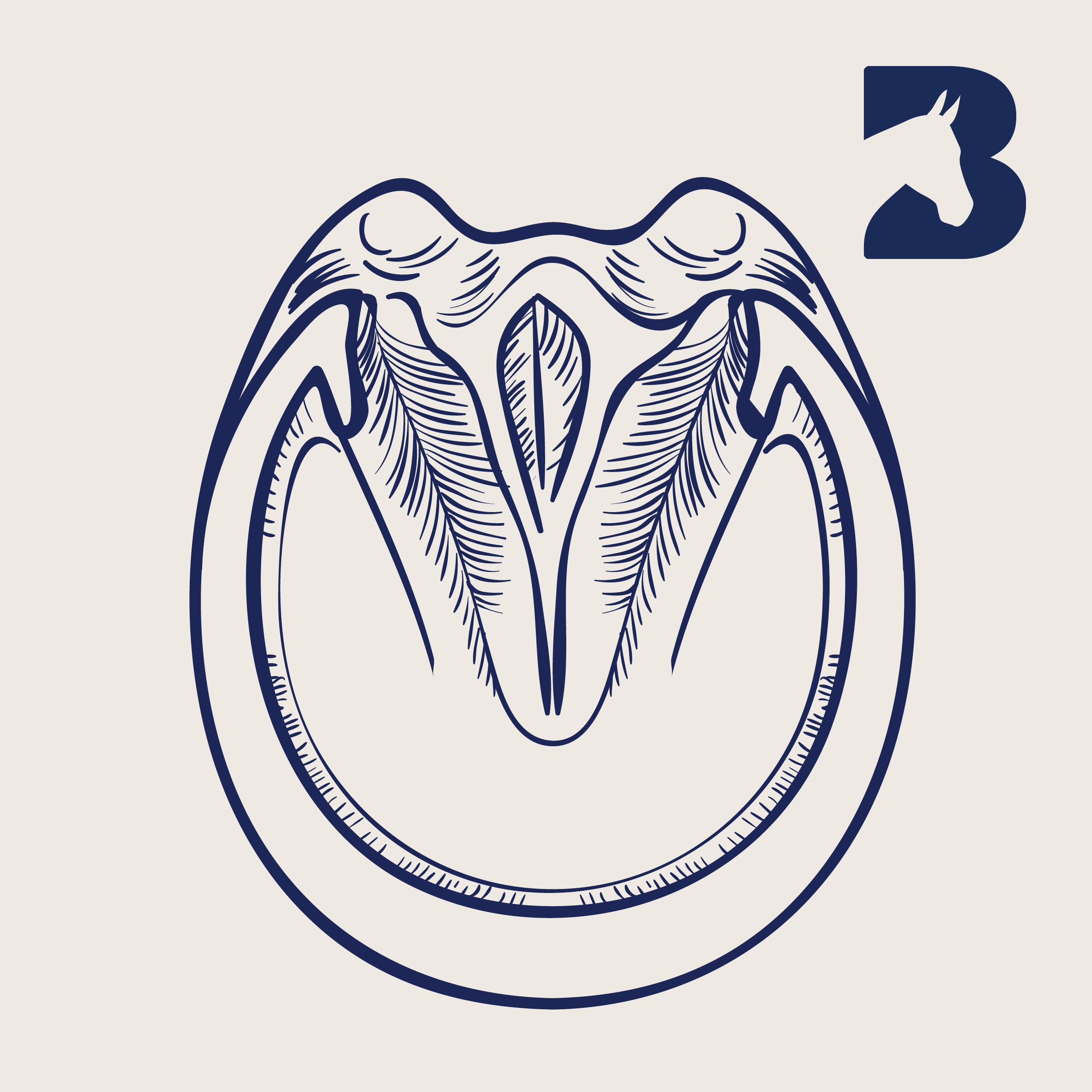
External parts of the foot
The coronet band is the top of the hoof, it has a rich blood supply that creates the new hoof wall.
This is the exterior part of the hoof; it is made from a keratin-based substance that provides a hard protective layer surrounding the internal parts of the hoof. Humans have keratin too, found in our hair and fingernails. It is very important for a horse to have a healthy diet, as it takes between 9-12 months for the hoof to grow from the coronary band to the toe.
This is an outer layer of the hoof; it forms a protective covering and is responsible for regulating moisture content in the hoof.
This is underneath the horse’s foot, it provides protection to the internal, sensitive parts of the foot. It is slightly concave and should not weight bear.
This is a triangle shaped structure that is softer than the horn. It absorbs concussion, provides grip and is a weight-bearing surface for the foot. It also ensures that a healthy blood supply reaches the foot. The grooves along each side of the frog allow for expansion when it contacts the ground.
This is the only visible part of the horse’s laminae; it is a white line where the hoof wall meets the sole. Monitoring should occur to check for any stretching or signs of infection, these can develop due to poor foot balance, poor farriery, poor conformation, or the horse being overweight. Bacteria can work its way up into the white line and cause infection known as seedy toe.
Internal parts of the foot
This is between the pedal bone and the outer layer of the sole. It produces new horn for when the insensitive sole has worn away.
The sensitive and non-sensitive laminae are complex structures which interlock and connect the outer hoof wall to the pedal bone and cartilages. The sensitive laminae act like Velcro to form a strong bond to support the pedal bone within the hoof. The division between the two laminae can be identified by the white line on the sole of the foot.
This is arched in shape which gives this relatively small bone the strength to bear the weight of the horse. It spreads the pressure created by distributing weight through the entire bone to reduce tension.
These are attached to the pedal bone and are there to protect the coffin joint. They also help absorb concussion and allow flexibility over undulating ground.
The front feet should slope forwards and be at a 45-degree angle to the ground, and on through the fetlock and pastern. The hind feet should be at an angle of 50-55 degrees to the ground. The hoof wall should be smooth and free from cracks. Any lines or groves in the hoof wall could indicate poor nutrition or past cases of laminitis.
The navicular bone is located at the back of the pedal bone and is held in place by two ligaments. The bone sits inside a pocket of synovial fluid, called a bursa, which allows the deep digital flexor tendon to glide over the bone smoothly. The navicular bone and the bursa sit within the coffin joint.
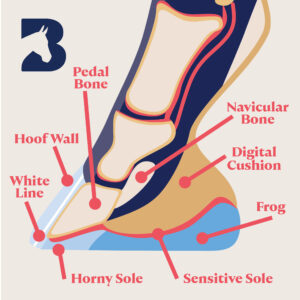
Correct hoof balance
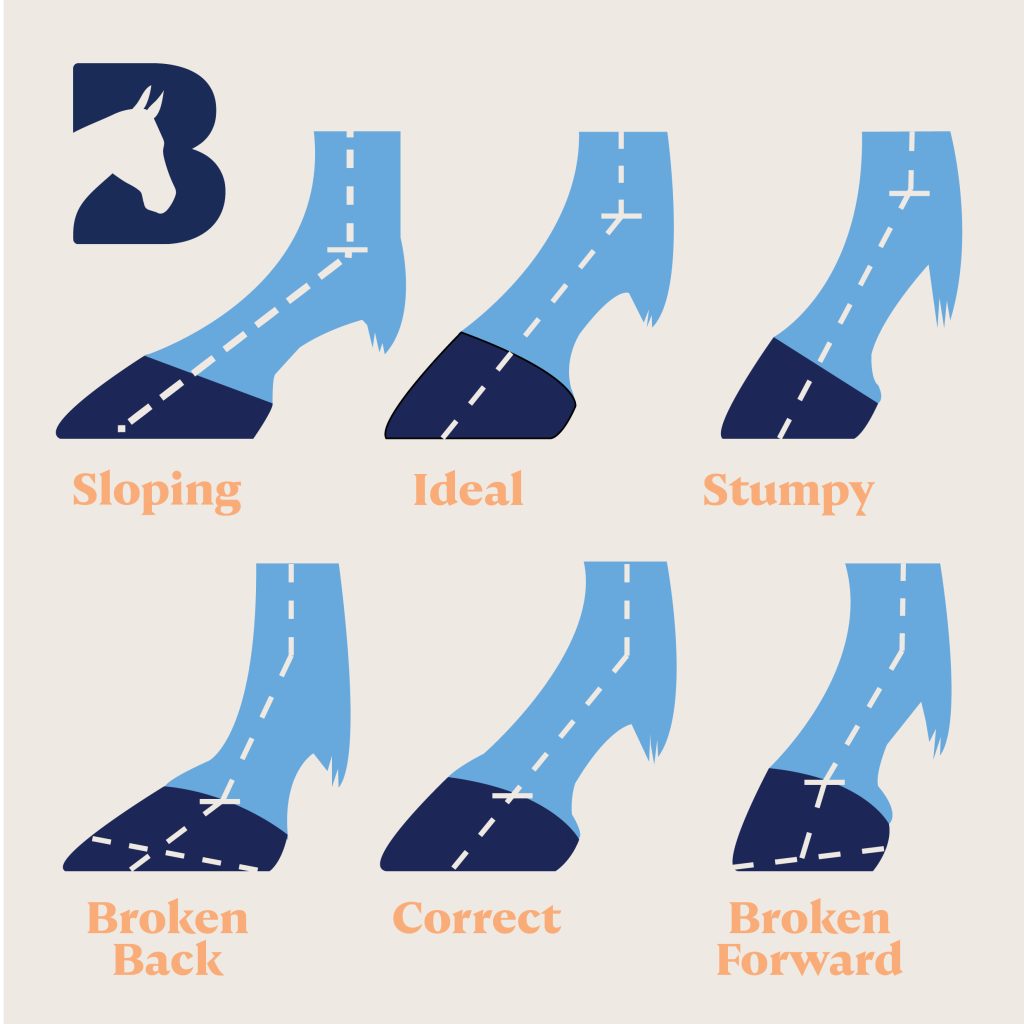
The front feet should slope forwards and be at a 45-degree angle to the ground, and on through the fetlock and pastern.
The hind feet should be at an angle of 50-55 degrees to the ground.
The hoof wall should be smooth and free from cracks.
Any lines or groves in the hoof wall could indicate poor nutrition or past cases of laminitis.
Routine care
Horse owners should have an understanding of how to care for their horse’s feet, you should have the ability to treat lameness promptly and effectively.

Ideally feet should be checked by a registered farrier every 4-8 weeks. You can find a registered farrier here

Pick out feet daily to check for stones, bruising, splits, and cracks in the feet.

Check for any excess growth in the hoof that have caused the feet to be unbalanced long or misshapen.

If your horse is shod, check for risen clenches, overgrown hoof, pinching at the bulbs of the heel, loose shoes or really worn shoes.

Check for any lameness or heat in the feet.
Test your knowledge and take the quiz
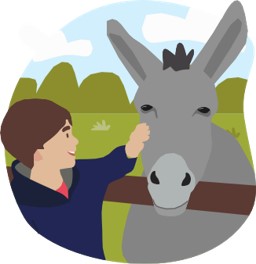
The Five Domains
The Five Domains is the most recent evolution of the five freedoms and provides us with a means to approach animal welfare in a more holistic manner, meaning that we are not just meeting their most basic of needs, but are making decisions that can further promote their physical and mental wellbeing.
Take a look at The Five Domains Model and see how its helped us move beyond simply providing the means for animals to live.
